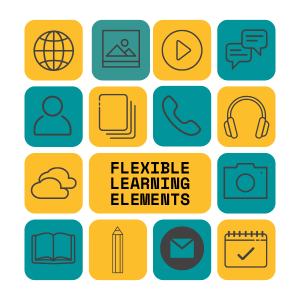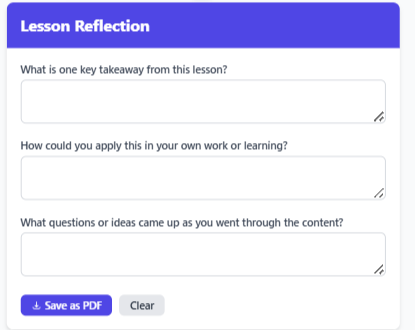The EDUCAUSE Horizon Report explores emerging technologies and teaching practices in 2025 that are likely to impact higher education and course creators can learn a lot from it.
The 2025 EDUCAUSE Horizon Report highlights how global shifts in education, technology, and learner expectations are reshaping the way we teach and learn. For course creators—especially those working independently or with small teams—these trends offer both a challenge and an opportunity to rethink their approach.
Read the full report here: 2025 EDUCAUSE Horizon Report® – Teaching and Learning Edition
Let’s break down the top three emerging teaching practices and how you can apply them to your own course design.
Flexible, Learner-Centred Design
What’s changing:
There’s a shift away from rigid, content-heavy courses toward experiences that are responsive, modular, and tailored to individual learners’ needs. Flexibility and personalisation are no longer “nice-to-haves”. They are now expected.
How to respond:
- Break your content into short, modular units that learners can complete at their own pace.
- Present content in a variety of formats, including video, audio, visual aids, interactive graphics, and engaging activities.
- Embed regular self-assessment points or reflective prompts to help learners track progress and adapt their journey.

Pedagogy-First, Supported by Tech-Enhanced Teaching
What’s changing:
Educators are refocusing on intentional pedagogy (the theory and practice of teaching), using technology only when it meaningfully supports learning. Flashy tools are out; purpose-driven tech is in.
How to respond:
- Start with your learning outcomes, then choose tech that enhances them.
- Use AI tools like ChatGPT or Canva AI to create supportive content—not to replace your own voice or expertise.
- Try online tools to build in interaction, reflection, or simulation such as this Lesson Reflection that can download the users notes as a PDF.

Collaborative and Social Learning Models
What’s changing:
Online learning is becoming more social, even in asynchronous (self paced learning) formats (self-paced learning). Courses that prioritise community, discussion, and co-creation are more engaging and more effective.
How to respond:
- Build in peer interaction through discussion boards, group challenges, or messaging platforms.
- Try cohort-based models with shared milestones, live sessions, or accountability check-ins.
- Encourage learners to contribute: user-generated content like project showcases or discussion videos creates buy-in and adds depth.

Wrap-Up for Course Creators
These evolving practices signal a major shift:
✔️ From one-size-fits-all to adaptable design
✔️ From shiny tech to purposeful tools
✔️ From isolation to connection and co-creation
You don’t have to overhaul your entire course overnight—but adapting now means your content stays relevant and human-centred. These evolving teaching practices in 2025 show that future-ready courses will need to be flexible, tech-savvy, and collaborative.
